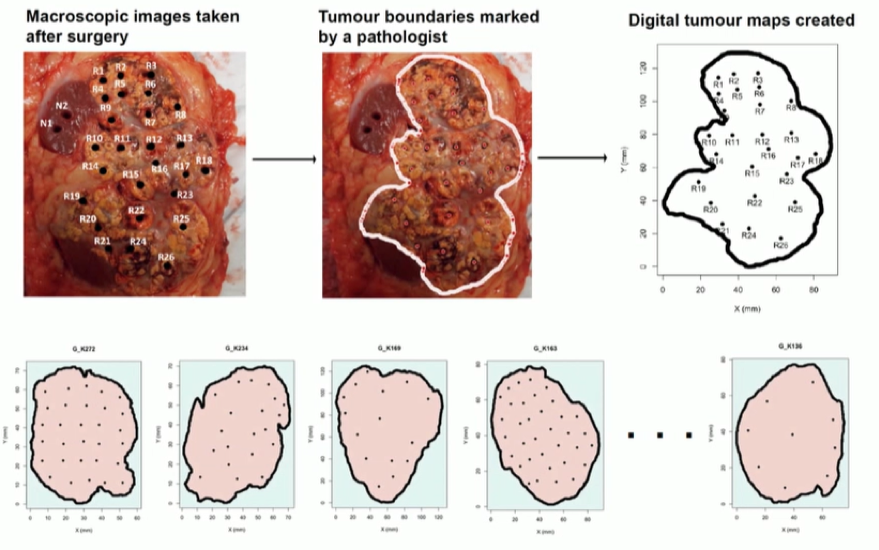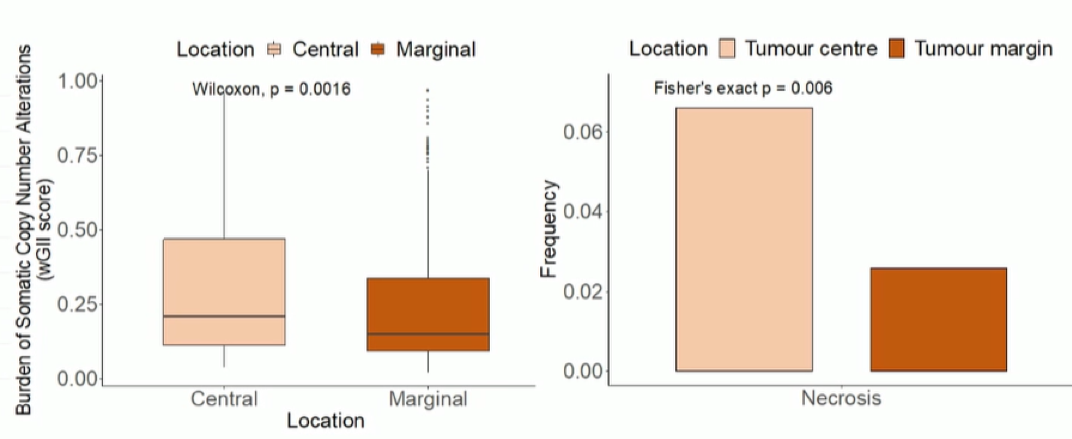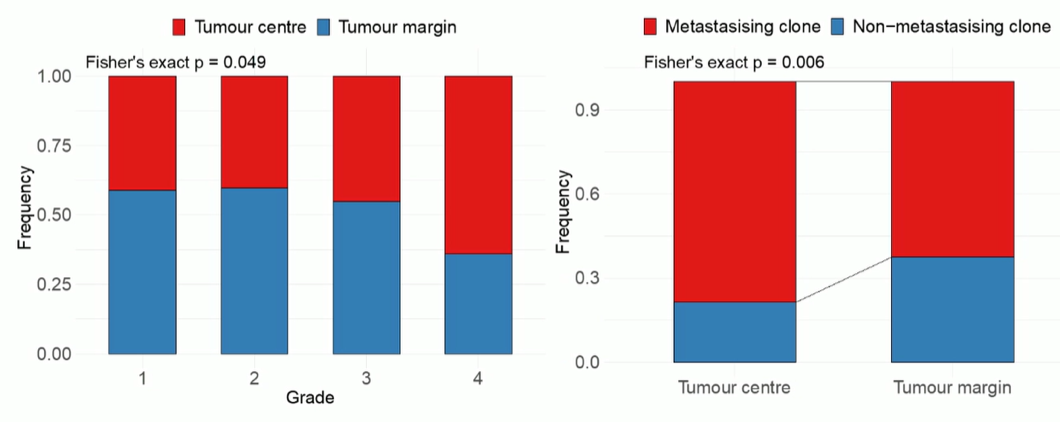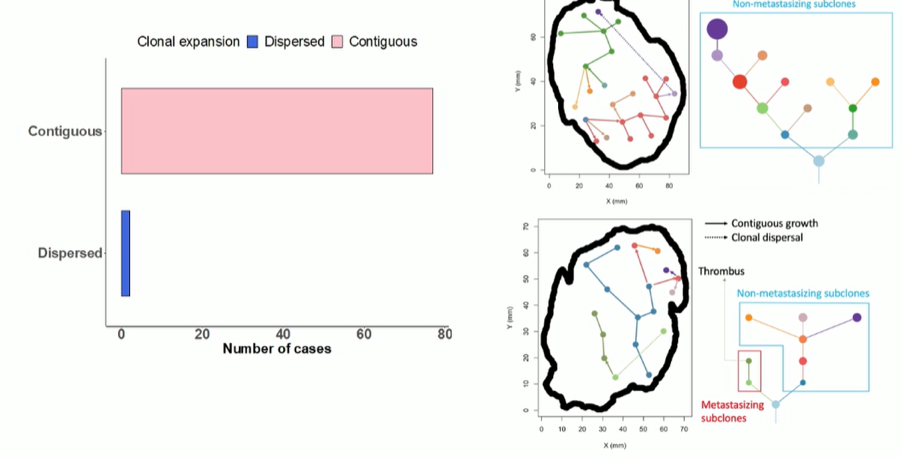Previous TRACERx studies1 have found genetic diversity and chromosomal complexity in clear cell RCC (ccRCC). In the presented study, spatial information was acquired from the TRACERx renal cohort (n=79) and combined with genomic data to try and study tumor evolution. This was done using pictures taken after surgery with boundaries being marked by pathologists and incorporation with genomic data (Figure 1).
Figure 1 – Spatial information from renal tumors:

The authors divided the tumors to central and marginal tumors based on the spatial distance to the tumor boundary, which is the boundary between tumor tissue and normal tissue. The authors found a higher proliferation rate, higher necrotic rate, and the burden of somatic copy number alteration in the tumor center (Figure 2).
Figure 2 – Burden of somatic copy number alterations by tumor location:

The authors validated the higher necrotic rate with a simulation model, also suggesting higher necrotic rates in the tumor center.
Figure 3 – Simulation model showing the higher necrotic rate in the tumor center:

Interestingly, the authors also found that more Fuhrman grade 4 regions and subclones that metastasize were found in the tumor center (Figure 4).
Figure 4 – Fuhrman grade 4 regions and subclones with metastatic potentials:

The data presented in this study suggest that the central areas of ccRCC tumors have more aggressive behaviors, which could be due to the harsh environment cells are exposed to in the tumor center, such as hypoxia, resulting from the inadequate blood supply, and necrosis, which is associated with chronic processes.
Two patterns of clonal expansion were inferred based on the phylogenetic tree and spatial location: contiguous and dispersed growth (Figure 5).
Figure 5 – Patterns of local expansion inferred based on the phylogenetic tree and spatial location:

Mr. Zhao concluded his talk stating the more work is currently being done to further explore the association between spatial dynamics and genomic alterations in renal cell carcinoma.
Presented by: Yue Zhao, Ph.D. candidate (London, United Kingdom)
Written by: Hanan Goldberg, MD, MSc., Assistant Professor of Urology, SUNY Upstate Medical University, Syracuse, NY, USA @GoldbergHanan at the 2020 European Society for Medical Oncology Virtual Congress (#ESMO20), September 19th-September 21st, 2020.
References:
1. Turajlic S, Xu H, Litchfield K, et al. Deterministic Evolutionary Trajectories Influence Primary Tumor Growth: TRACERx Renal. Cell 2018; 173(3): 595-610.e11.


